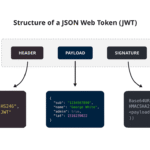If you’re trying to break into the tech world , having a portfolio isn’t optional anymore. It’s your ticket in. Your story. Your proof. And believe me, I’ve seen both ends of the table — trying to get noticed by recruiters and now working with folks who do the hiring. The difference a good portfolio makes? Huge.
Let’s dive in. I won’t give you generic bullet points — I’ll just talk to you like a fellow nerd who’s been through this and made a few mistakes along the way.
First Impressions Matter, Especially in Portfolios

You might have built five brilliant apps. Or solved a thousand LeetCode problems. But if your portfolio looks like something from 2008 (no offense), it won’t hold attention.
And don’t confuse “simple” with “boring.” Clean is good. White space is your friend. Fancy animations? Eh, if they slow things down or distract, skip it.
Quick tip: Use your real name as your domain if you can. It adds this subconscious credibility boost. Like “oh, this person means business.”
Show Direction, Not Just Skills
This part’s so underrated. Don’t just dump your projects on a page with links. Explain them like you’re telling a friend over coffee.
For example:
“I built this weather app because my younger sibling kept asking me if it was going to rain before school. I figured — why not make something for them?”
Boom. Now your project isn’t just code, it’s context. It’s intention. That’s what people connect with.
Also — every recruiter knows you can Google things. They want to know why you built it. How you approached the problem. What you’d do differently if you rebuilt it today.
Pick Quality Over Quantity
Look, you don’t need 15 half-baked projects on your portfolio. That just screams “I start a lot but rarely finish.”
Instead, pick 2–3 solid projects. Make sure they:
- Have clean and working demos
- Come with GitHub links (bonus points if the commits show progression)
- Are explained in human terms — not just tech lingo
One of my friends had just two projects on her site — a budget tracker and a simple blog engine — but she described every challenge she faced. Guess what? She landed a job within two months.
Talk About the Learning Process
Let’s say you learned how to integrate APIs, or finally wrapped your head around state management (yes, React devs, I see you). Don’t just say “integrated API.” Tell the story.
Something like:
“I thought this API would be easy to connect, but it kept throwing CORS errors. After a bit of head-banging, I realized I hadn’t configured headers properly. Rookie mistake, but now I’ll never forget it.”
That right there? Gold. Recruiters love it because it shows humility, curiosity, and growth. All green flags.
Don’t Skip the About Me Section
Please. I’ve seen so many “cool” portfolios with no personal touch. And I’m like — who’s behind all this code?
You don’t need to write an essay. Just a few lines about what you’re into. Maybe how you got into tech. What excites you. Heck, even your favorite dev meme (okay maybe not that, but you get the idea).
Be human. They’re hiring you, not just your repo.
Make It Accessible
I learned this the hard way. Once, a recruiter messaged me that my site looked “weird” on their tablet. Yikes.
Make sure your portfolio works:
- On mobile
- In multiple browsers
- With slow internet
No one’s gonna email you saying “hey, your images didn’t load, but we’d love to interview you anyway.” They’ll just close the tab and move on.
Tools like Lighthouse or just asking a couple of friends to test your site can go a long way.
Contact Info — Make It Easy
Sounds obvious, but… I’ve seen it too many times. People bury their email under three scrolls or link to a dead LinkedIn.
Put a clear contact section at the bottom (or top, or both). Include:
- GitHub
- Maybe Twitter (if it’s relevant and not full of hot takes on pizza toppings)
Bonus if your email address doesn’t look like coder_1234@abc.com. Keep it clean and professional.
Keep GitHub Active and Clean
Recruiters do click through. Keep your GitHub public, and pin the projects you’re most proud of. Write good README files — think of them as cover letters for your code.
And please… don’t leave test folders with “test123.py” lying around.
Also, your commit messages don’t have to be poetry, but avoid “update,” “fix,” and “more fixes” ten times in a row.
Add a Blog (Optional, but Worth It)
Even just two or three blog posts can make a difference. Talk about that time you finally got your database to seed properly, or what you learned from failing your first project.
Writing helps you stand out. It shows you can communicate ideas — super valuable in a team setting.
Tools I Used (for Inspiration, Not Rules)
I personally used:
- GitHub Pages to host (free and easy)
- Notion to draft content
- Figma for layout planning
- Google Fonts for that lil’ design pop
But you do you. Use what feels natural.
Final Thoughts
Your portfolio is like your digital handshake. It tells people who you are, what you care about, and how you work. It doesn’t have to be perfect. In fact, a little imperfection makes it feel real.
Don’t wait until you’ve mastered everything to build your portfolio. Build it now. Grow it along the way. Update it often.
And most of all — enjoy the process. You’re not just building a site; you’re building your story.
Read our more blogs-
How I Learned to Wire My IoT Data to a Web Dashboard with Node-RED & MQTT

